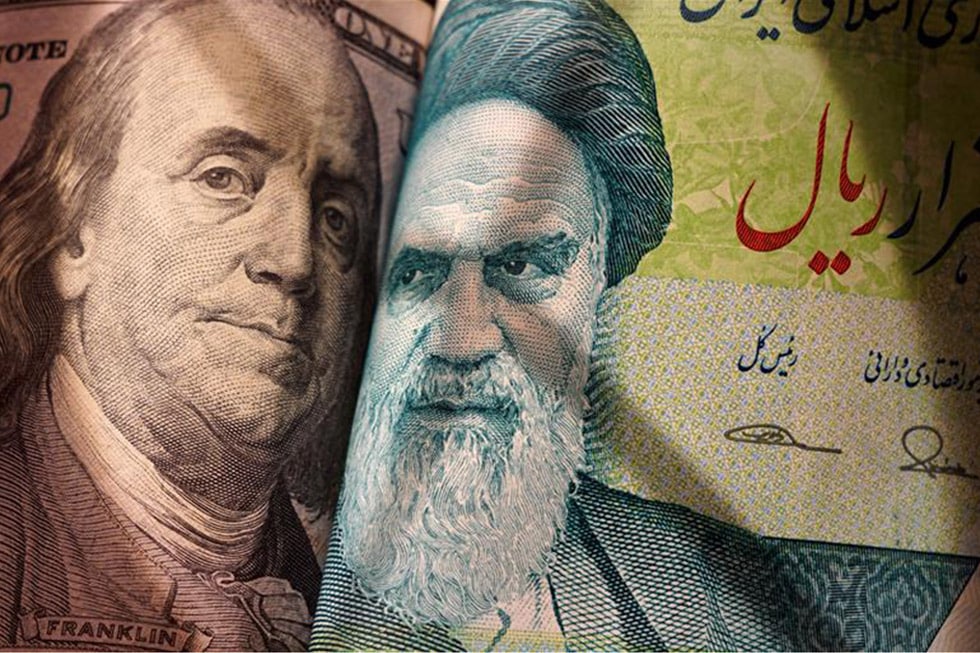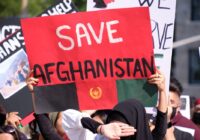On June 13, 2025, Israel launched Operation Rising Lion, a bold move aimed at crippling Iran’s nuclear capabilities and strategic infrastructure. Israel’s strikes significantly hit the Natanz nuclear site, damaged Isfahan’s uranium conversion facility, and hit the Iranian Islamic Revolutionary Guard Corps (IRGC) missile complex, killing a key IRGC Chief. Unlike earlier limited operations, Rising Lion marked a shift towards high-risk preemptive strikes designed not merely to delay or impede, but to paralyze Iran’s nuclear program, bringing the two nations to the edge of full-scale war.
Nine days after Israel’s strikes, the US launched its own military operation, Operation Midnight Hammer, targeting Iran’s key nuclear sites at Fordow, Isfahan and Natanz. The strikes, intended as both deterrence and containment, have allegedly caused significant damage to Iran’s nuclear infrastructure, though Iran has claimed there is only superficial damage.
Several Open Source Intelligence (OSINT) analysts have suggested Iran shifted their uranium reserves before the strikes. Notably, US Vice President JD Vance has indicated that 400 kg of uranium was unaccounted for post-strike, raising alarms about Iran’s next moves.
However, the real question is not about the strike’s effectiveness. It’s about whether this will truly force Iran into a corner or if it is merely a symbolic victory.
Israel’s evolved counter-proliferation strategy
Israel has adopted a strategy of disruption and paralysis against adversaries who choose to go nuclear, posing a strategic threat to the country — a plan that came to be called the Begin Doctrine in the 1970s.
The origins of this doctrine trace back to 1962 with Operation Damocles, when Israel’s intelligence agency, the Mossad, targeted German scientists helping Egypt develop long-range missiles via letter bombs, abductions and threats to their families. Though covert and controversial, it successfully stalled Egypt’s rocket program.
In subsequent years, the doctrine evolved to preemptively target any hostile state’s nuclear program, preventing them from acquiring nuclear weapons via counter-proliferation efforts.
This doctrine was vividly demonstrated in 1981 with Operation Opera, when Israeli jets destroyed Iraq’s Osirak reactor, and again in the 2007 Operation Orchard, which eliminated a nascent Syrian nuclear facility. Both Operations aimed at decisive, overt action to ensure adversaries never reached nuclear capability.
However, Iran’s nuclear challenge forced Israel to recalibrate this doctrine. Unlike the degrading or paralyzing nuclear programs of Syria and Iraq, Israel has opted to delay and disrupt Iran’s nuclear program without employing overt offensive measures.
The reason is simple: geo-economic and strategic considerations. And the key historical factor in these considerations? The United States.
The US factor between Israel and Iran
Iran’s energy profile cannot be overlooked, as it has the world’s second-largest natural gas and third-largest oil reserves. There are strong concerns that it could also block the Strait of Hormuz, a narrow waterway that transports 20% of the world’s oil and natural gas, increasing the price of petrol to $100 per barrel. While blocking the Strait has the initial potential to spike oil prices, it has a limited capacity for consequences to the West and could harm its own interests, according to analysts.
The threat of Iran instead lies in its extensive proxy network and decades of sustained asymmetrical warfare. The October 7 attacks on Israel are an alleged example of its proxy war involvement.
Therefore, the US knows that balancing and moderating conflict with Iran must be part of its plans to ensure regional stability in the Middle East, as a weak Middle East would present economic and security challenges to the US’ geopolitical influence and economy.
But this, historically, has not always been a successful venture for the US.
The failures of the historic approach to Iran
The US’ long-standing strategy in the region began with offshore balancing and containment, seeking to prevent any one power from dominating the oil-rich Gulf. Its first major operation was organizing Iran’s coup d’état in 1953, which overthrew Prime Minister Mohammad Mosaddegh, who was leaning toward the Soviets.
Through the 1960s and ‘70s, Washington helped Israel strengthen its regional presence while invoking the Eisenhower Doctrine to justify military interventions against communist threats, such as the 1958 Lebanon deployment under Operation Blue Bat. Post 1979, with the advent of the Islamic Revolution in Iran and the Iranian hostage crisis, there was a shift toward assertive containment that extended to the Lebanon Intervention between 1982-84. This strategic assertiveness became central to US policy in the region.
The Iran-Iraq War was a power struggle for Gulf dominance, not just a territorial conflict. Iran’s Islamic Revolution signaled the rise of the Shia crescent, alarming Saddam Hussein and threatening US regional influence. To counter Iran’s growing power and prevent any single actor from dominating the Gulf, the US-backed Saddam with military and economic support. The US overlooked Saddam’s atrocities, human rights violations and use of chemical weapons.
But when Saddam invaded Kuwait in 1991, kicking off the Gulf War, the American gamble backfired. Washington’s attempt to balance Iran through Iraq had inadvertently empowered a regional threat and weakened its own position. This was perhaps the first US failure in the Middle East and the beginning of the long-term instability in the region. In response, the US introduced a broader policy of “dual containment” in 1993 to curb both Iraq and Iran.
Though tactically effective in coercing both Iran and Iraq, dual containment proved strategically flawed in the long term. It weakened Iraq but allowed Iran to expand its influence via Shia groups, even as proxy conflicts continued. Meanwhile, the rising US military presence, especially in Saudi Arabia, fueled extremist and terror sentiments, culminating in Al-Qaeda’s 9/11 attack and the 2003 Riyadh bombings, where Westerners were targeted. Sanctions and regime change tactics yielded no significant impact on either country, revealing Washington’s faulty geopolitical assessments and superficial understanding of regional dynamics.
This fractured Middle East policy has undergone necessary makeovers in recent years, like weighing more on diplomacy and limiting itself to security issues, but it still hinges on limited strategic gains and therefore, risks.
To avoid a full-scale war with Iran, the US turned to covert means. In 2006, it launched a first-of-its-kind cyber offensive, Operation Olympic Games, which targeted Iran’s nuclear infrastructure. While this move by the US sought to derail Iran’s nuclear ambitions without triggering direct conflict, many analysts argue that the core objective was to persuade Israel to use means other than the direct and conventional against Iran. The Operation significantly influenced Israel’s security apparatus, as barely a year later came the purported assassination of Iranian nuclear scientist Ardeshir Hosseinpour, followed by a series of assassinations of key Iranian nuclear scientists.
In 2016, the Iran nuclear deal (the Joint Comprehensive Plan of Action, or JCPOA) sought to curtail Iran’s nuclear program in exchange for sanctions relief. It was put forward to ease regional tensions, foster economic relationships and deepen US influence in the Middle East. Israel opposed it, fearing economic relief would empower Iran to upgrade its security systems and proxies, and importantly, clandestinely develop nuclear weapons, thus limiting covert options.
Despite this opposition, the JCPOA came into effect in January 2016. It did limit Israel’s opportunities to carry out covert offensives, as noted by a significant statistical decline post-2016.
In 2018, with Trump’s withdrawal from the deal, the US reimposed sanctions and escalated pressure on Iran. Israel resumed its covert operations, such as its alleged June 2020 cyber attack on Iran’s nuclear sites, and its most complex and significant operation — the 2021 assassination of Mohsen Fakhrizadeh, the chief of Iran’s nuclear program.
Why Israel paralyzed Iran in Operation Rising Lion
Following the October 7 attacks on Israel and the collapse of the Assad regime, the Middle East entered a renewed phase of instability. Against this backdrop, the Trump administration shifted from maximum pressure to a more diplomatic approach towards Iran. The new strategy had two objectives: to push Iran to dismantle its nuclear program to ensure regional security and secure a diplomatic and media win by introducing a stronger alternative to the JCPOA.
However, Iran insisted on limiting — not dismantling — its nuclear program while demanding sanctions relief, creating a deadlock. Trump warned Iran, “There will be bombing,” if a deal wasn’t reached, escalating tensions further.
This caused Israel great anxiety on two counts. One, it feared that the talks were buying Iran more time, as by March 2025, Iran had attained 60% uranium enrichment. Within a few weeks, it could initiate the process to develop nuclear weapons, which would then take just a year to complete. Two, it feared that the US might rush a compromised or weak deal to claim diplomatic success. According to reports, the Mossad struggled to convince the US Special Envoy to the Middle East, Steven Charles Witkoff, of the risks of re-negotiating with Iran. This contributed to its growing distrust in the negotiation process and prompted a reassessment of its military posture toward Iran.
Israel has now made a few things clear: it no longer aims to simply disrupt Iran’s nuclear program but wants to paralyze it as it did with Iraq and Syria.
While 2024’s Operation Days of Repentance struck several of Iran’s strategic and military sites, the operational scope was limited on the nuclear front, with one minor nuclear research facility in Iran’s Parchin being targeted.
However, in Operation Rising Lion, Israel aggressively struck key nuclear sites. While effectiveness was one startling difference, several reasons forced Israel not only to shift its operational scope but also to take strategic risks with regional stability. One: cut short Iran’s time-buying tactics. Two: force Iran back to the negotiating table under pressure. And three: weaken its strategic position to the point of conceding to US demands and surrendering its nuclear ambitions.
While some tactical goals were achieved by Israel, broader strategic successes will only be possible if Iran fully abandons its nuclear ambitions. Although a regime change is an option, the US is likely to prioritize regional security and stability, for now.
Operation Midnight Hammer has not deterred Iran
Following Israel’s lead, the US launched targeted strikes on Iranian nuclear facilities, intended as both deterrence and leverage in negotiations.
However, will the US actually transform this tactical success into strategic gains by pushing Iran to negotiate a new plan or by dropping its nuclear obsession? The answer is no.
Iran’s fixation on nuclear weapons is deeply linked to its identity and national pride, which can be reduced through coercion but not entirely abandoned. Trump’s efforts to do so complicate new negotiations and Iran’s obsession is evident: it did not aim to import a nuclear bomb but to develop its own.
With 400kg of uranium missing after US strikes, JD Vance has asked the burning question, “Can Iran enrich the uranium to weapons-grade level and can they convert that fuel into a nuclear weapon?” He raises genuine fears that Iran may pursue a nuclear weapon directly, bypassing diplomacy and brinkmanship entirely — a move reminiscent of North Korea.
The limited effectiveness of the US attacks, which reportedly set Iran’s program back by only a few months, underscores the folly of symbolic actions without long-term planning. Iran, undeterred from its nuclear ambitions, has since escalated threats, including moves to close the Strait of Hormuz, heightening global energy and security concerns.
These security fears could threaten the fragile ceasefire between Israel and Iran, especially as the US–Israeli relationship remains far from its goals.
In effect, the US military gamble may have exacerbated the Middle East’s tensions rather than neutralizing them, with Iran’s nuclear trajectory still firmly in motion.
[Yaamini Gupta edited this piece.]
The views expressed in this article are the author’s own and do not necessarily reflect Fair Observer’s editorial policy.
Support Fair Observer
We rely on your support for our independence, diversity and quality.
For more than 10 years, Fair Observer has been free, fair and independent. No billionaire owns us, no advertisers control us. We are a reader-supported nonprofit. Unlike many other publications, we keep our content free for readers regardless of where they live or whether they can afford to pay. We have no paywalls and no ads.
In the post-truth era of fake news, echo chambers and filter bubbles, we publish a plurality of perspectives from around the world. Anyone can publish with us, but everyone goes through a rigorous editorial process. So, you get fact-checked, well-reasoned content instead of noise.
We publish 3,000+ voices from 90+ countries. We also conduct education and training programs
on subjects ranging from digital media and journalism to writing and critical thinking. This
doesn’t come cheap. Servers, editors, trainers and web developers cost
money.
Please consider supporting us on a regular basis as a recurring donor or a
sustaining member.
Will you support FO’s journalism?
We rely on your support for our independence, diversity and quality.













Comment